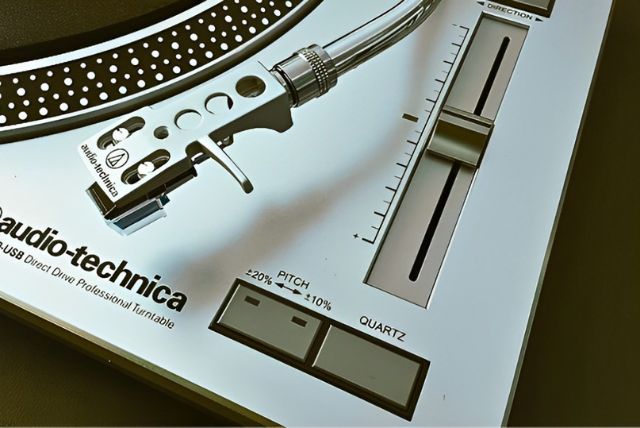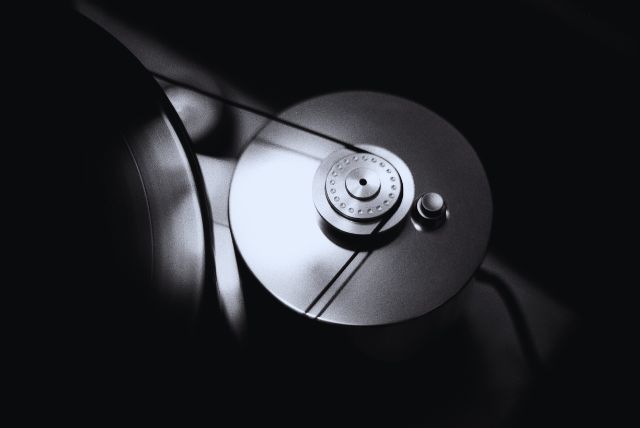Before buying their first turntable, many of my friends asked me the same question: direct drive vs belt drive, and which is better?
As they are my friends and I know they are just getting into the hobby of collecting vinyl and listening to them. Belt drives are good for them.
But this is only the case with some and could be different in your case. You may want to experiment with music, or by profession, you are a DJ and want something with much more advanced features. Then I recommend a direct drive for you.
To simplify it, here is a quick video and a difference between the two:
| Direct drive | Belt drive | |
| Motor positioning | Under the platter | Outside the platter |
| Torque | Higher | Lower |
| Noise and vibration | More noise and vibrations as the motor is placed under the platter. | Less noise and vibrations due to the belt mechanism. |
| Sound experience | Good | Excellent |
| Cost | Expensive | More Affordable |
What is a Direct drive turntable?
The direct drive turntable is the one in which the motor is directly placed beneath the platter and does not require any belt to rotate it. Because the motor is now under the platter, it gets more accessible for the platter to reach full speed in just a few seconds and much easier to maintain the pace.

Another advantage of these turntables is their consistent speed and more substantial torque.
A good example of Direct drive turntable is an Audio-Technica AT-LP120XUSB.
Pros of a Direct drive turntable
Consistent speed

Due to the placement of the motor directly under the platter, direct-drive turntables can maintain a constant speed. They also have a proper circuit that is responsible for maintaining speed consistency.
Reverse play

Due to the absence of a belt, direct-drive turntables can play records in reverse. It makes them ideal for DJs who perform back-cueing (playing records backwards or to a particular spot) and experimental music enthusiasts.
Higher Torque

It offers a higher level of torque that reduces the distortion in sound when the vinyl record is played.
What is a Belt drive turntable?
As the name suggests, a belt drive is a mechanism in which a belt is used to spin the turntable platter.
The motor can be found at the side of the turntable. Sometimes, it could be next to the entire platter or just at the edge of the inner platter on which the outside platter rests. The motor and the turntable platter are wrapped around with a belt, so once the motor starts spinning the belt, it also rotates the platter with it.
Because a belt powers the turntable, it takes a few seconds for the platter to reach its full potential. Still, the user hardly notices this as the platter achieves its full speed before the cueing mechanism drops the stylus on the vinyl record.
The belt may need replacement over time, depending upon the number of hours the turntable is used. But it’s not a problem because replacing it is simple and inexpensive. To know more about replacing a turntable belt visit here.
Audio-Technica AT-LP60XBT-USB is a good example of a belt drive turntable.

Pros of a Belt drive turntable
Less vibrations
As the motor is placed outside the platter, the vibrations are less. This mechanism improves the overall sound experience.
Reduction in motor sound
Another significant advantage of a belt-driven turntable is that its belt ensures the motor sound doesn’t reach the turntable and mixes with the music. This results in a much more transparent sound.
Gentle on vinyl records
The belt-driven mechanism protects your records against unnecessary wear and tear as it exerts less force on the vinyl surface than the direct-drive ones. It also means that it increases the longevity of your vinyl collection along with your turntable stylus.
More detailed differences between the two types
Here is a more detailed difference between the two of them:
Placement of motor
The motor is placed away from the platter in belt drive, while in direct drive, the motor is directly coupled to the platter.
Noise and vibration
Belt-driven are famous among audiophiles because they produce less noise and vibration while playing a record. Direct drive, on the other hand, creates much more noise and vibration due to the placement of the motor directly under the platter.
Torque
Belt-driven produces less torque due to their mechanism, while Direct drives are capable of producing higher torque and speed.
Wear and tear
The belt-driven causes less wear and tear to your precious vinyl collection because it applies much less force on the record surface than the direct drive.
Cost
Direct-drive turntables are more expensive than belt-drive turntables because of their advanced technology, features and capabilities.
Which one is better for you?
Direct drive vs belt drive is a question of debate, but it depends on your motive behind purchasing the turntable.
Direct drives are your best bet if you are a passionate DJ who wants to perform scratching or reverse cueing and wants some additional features.
And if you have a huge vinyl collection and want a gentle turntable that produces excellent sound, go for a belt drive one.
Frequently Asked Questions
Q: What is the advantage of belt drive over direct drive?
The belt drive turntable has reduced motor sound, produces fewer vibrations, and is gentle on vinyl records.
Q: Should I get a direct drive or belt drive for DJ?
If you are a DJ, you should definitely get a direct-drive turntable, as it can perform back-cueing, maintain consistent speed, provide a higher level of torque and offer operational capabilities that are a must for live performances.
Q: How long does a turntable drive belt last?
The belt on a belt-drive turntable can last anywhere from 1 to 5 years, depending on how often the turntable is used.
Q: Should I get a direct drive or belt drive for DJ?
If you are a DJ, you should go for a direct drive turntable as it gives you more control over pitch and speed and allows you to mix and scratch while playing a record.
Q: Do direct drive turntables last longer?
Yes, direct-drive turntables tend to last longer than belt-drive turntables due to having fewer moving parts and the absence of a belt, which can reduce the chances of wear and tear.
Q: How to tell if a turntable belt is bad?
If you notice the belt has cracks or is stretched more than its regular size, it means it’s time to change your turntable belt.
Q: Can you skip songs on vinyl?
Yes, you can skip songs on a vinyl record. If you have an automatic turntable, it can do this for you. If you have a manual one, you can lift the tonearm and place it at the start of the song you want to play, but it’s important to do so carefully to avoid damaging the grooves.


